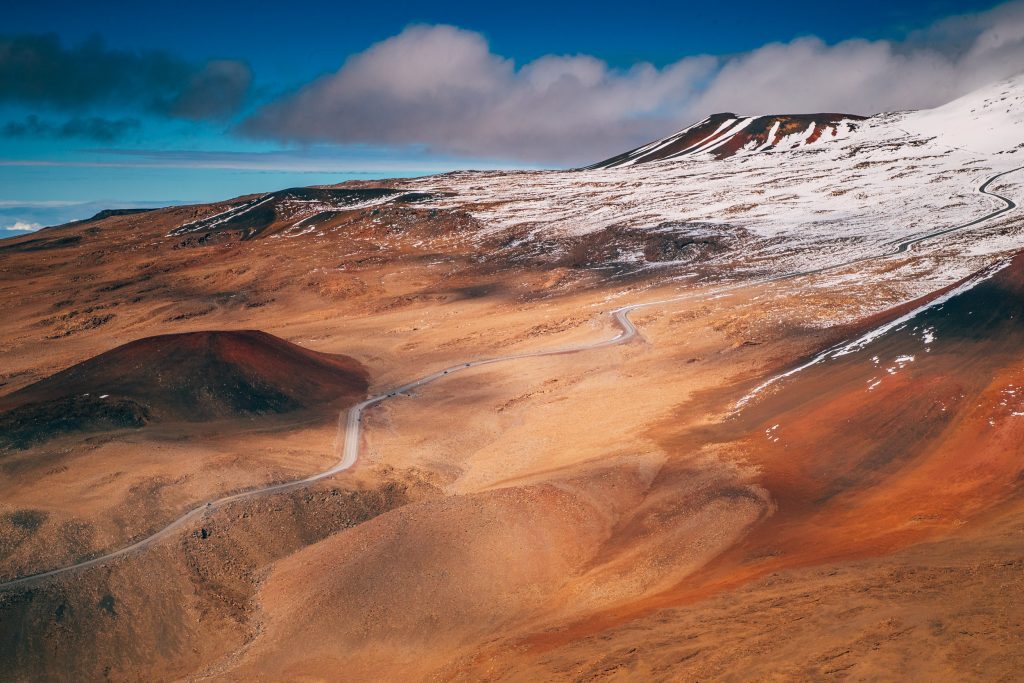While an ongoing debate persists about who holds ultimate decision-making authority for Mauna Kea, state leaders have been discussing possible alternative sites for the controversial Thirty Meter Telescope.
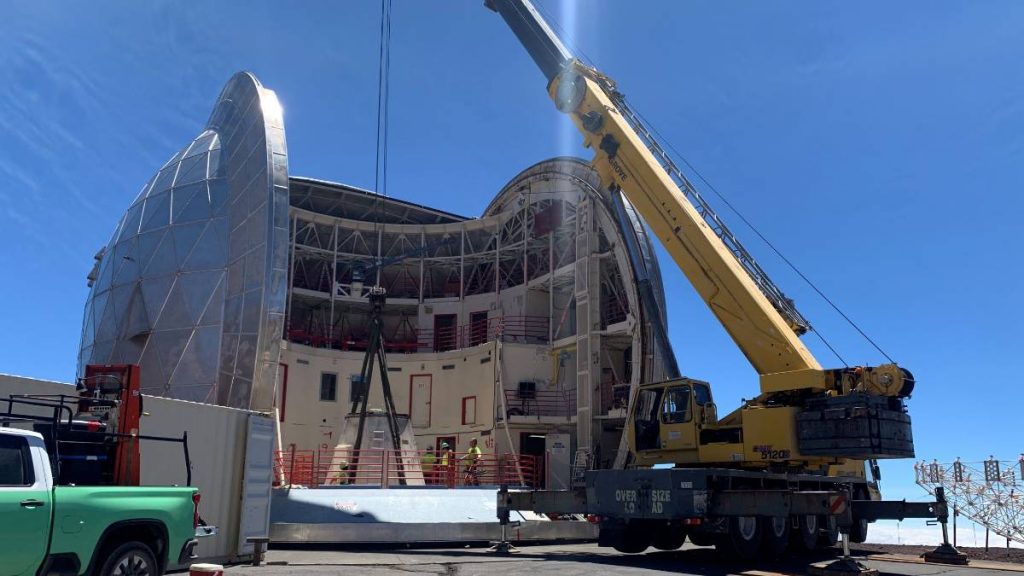 Caltech Submillimeter Observatory was decommissioned beginning in 2023. (Courtesy of the University of Hawaiʻi)
Caltech Submillimeter Observatory was decommissioned beginning in 2023. (Courtesy of the University of Hawaiʻi)
Last month, Hawaiʻi Gov. Josh Green committed to working with the Mauna Kea Stewardship and Oversight Authority and the University of Hawaiʻi to establish a procedure for permitting the construction of the telescope, now estimated to cost $3 billion, at a decommissioned telescope site on Mauna Kea.
In a September presentation, TMT project manager Fengchuan Liu said it could be possible to redevelop a former telescope site, including the former location of the Caltech Submillimeter Observatory.
Hawaiʻi Island Mayor Kimo Alameda, a member of the Mauna Kea Stewardship and Oversight Authority board, expressed support for this idea, believing it could meet many criteria for the Kū Kiaʻi Mauna (Guardians of the Mountain).
“The truth is that the Thirty Meter Telescope is a potential economic driver for us, and I think it is a good idea to consider,” Alameda said. “For one, the decommissioned area is already disturbed, and this would not be a new site on the mountain. I also think there have been many misconceptions about the potential build.”
The telescope was under construction in 2019, but stalled when protests erupted on the mountain by Native Hawaiians who consider the mountain sacred. The protests became bigger, attracting thousands of opponents. Then came the COVID-19 pandemic and the project has been stalled ever since.
ARTICLE CONTINUES BELOW ADARTICLE CONTINUES BELOW AD
For the science community, the telescope is crucial for astronomy, with its advanced capabilities that would enable the study of the earliest stars, black holes, dark matter and the formation of planets in unprecedented detail.
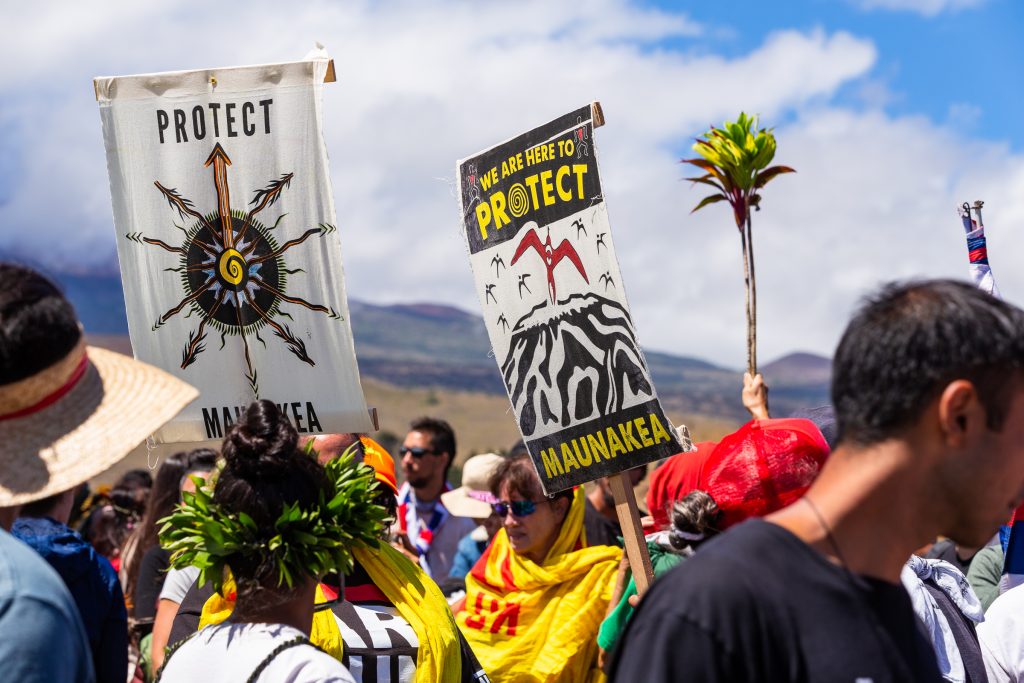 Thirty-meter telescope protest on Mauna Kea on July 15, 2019. (PC: Gerald Besson)
Thirty-meter telescope protest on Mauna Kea on July 15, 2019. (PC: Gerald Besson)
Alameda said TMT’s 18-story observatory building would not be visible if built on the former Caltech site because of a gully atop the 13,803-foot mountain. However, any new construction might be seen as further desecrating a sacred mountain.
Although the Mauna Kea Oversight and Stewardship Authority cannot make decisions on leases until 2028, TMT has been investing and waiting to see what its future in Hawaiʻi will be for more than 10 years.
“(TMT) has been holding out for a long time and is paying $1.2 million every year when they aren’t on the mountain,” Alameda said. “I think their board and staff have worked hard to address most concerns while being more communicative and collaborative.
“It will be up to the Authority, and I’m not sure how it will shake out, but we need to come to some agreement or decision soon to let (TMT) know,” Alameda added.
ARTICLE CONTINUES BELOW AD
Under the UH Mauna Kea master plan, no more than nine observatories would remain once a science reserve area lease expires in 2033. The Caltech Submillimeter Observatory and Hōkū Keʻa have already been removed, and the United Kingdom Infrared Telescope is in the early stages of decommissioning.
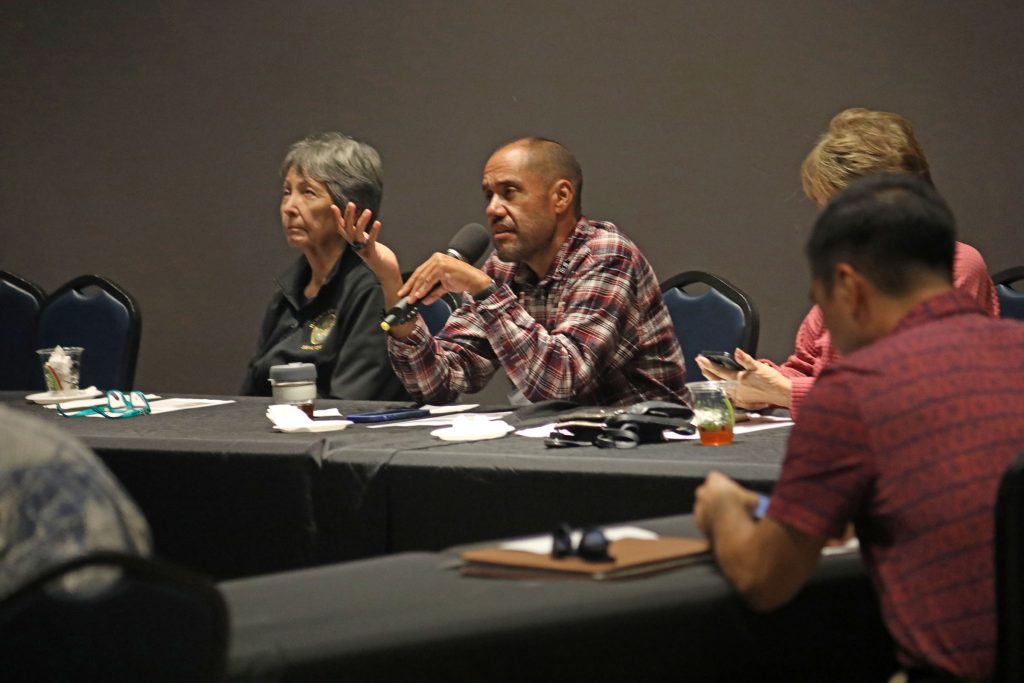 State Sen. Donovan Dela Cruz asks questions during a Senate Committee on Ways and Means site visit with the Mauna Kea Stewardship and Oversight Authority at ʻImiloa Astronomy Center on Wednesday, Nov. 5, 2025. (Kelsey Walling/Big Island Now)
State Sen. Donovan Dela Cruz asks questions during a Senate Committee on Ways and Means site visit with the Mauna Kea Stewardship and Oversight Authority at ʻImiloa Astronomy Center on Wednesday, Nov. 5, 2025. (Kelsey Walling/Big Island Now)
This week, the Senate Committee on Ways and Means conducted site visits on Hawaiʻi Island to meet with government agencies, private organizations and community leaders to evaluate statewide initiatives and budgetary decisions. This included a meeting on Wednesday between the Mauna Kea Oversight and Stewardship Authority, the University of Hawaiʻi at Hilo and the Department of Land and Natural Resources.
A significant portion of the meeting involved discussions and arguments between the Authority and members of the Ways and Means Committee on who ultimately makes the decision to issue conservation use permits on the summit of Mauna Kea, which is designated as a State of Hawaiʻi Conservation District and is managed by DLNR through the Office of Conservation and Coastal Lands.
But Act 255 established the Mauna Kea Stewardship and Oversight Authority as the principal authority for the management of Mauna Kea lands, currently managed by the University of Hawaiʻi and the Board of Land and Natural Resources. However, it does not designate any ultimate authority concerning the conservation district.
“Without the ability to issue conservation use permits, that makes the Authority more of an advisory board because those permits need to be approved by the (Department of Land and Natural Resources), which goes against the point of Act 255,” said John Komeiji, business and finance chair of the Mauna Kea Stewardship and Oversight Authority board.
ARTICLE CONTINUES BELOW AD
“As I understand it, the legislation was a promise to the Kiaʻi that we are going to give you a voice and a vote. The Authority should be able to issue leases, pending future projects, but with the present authorization needed, that takes that voice away.”
 Sen. Joy Buenaventura asks a question during a Senate Committee on Ways and Means site visit with the Mauna Kea Stewardship and Oversight Authority at ʻImiloa Astronomy Center on Wednesday, Nov. 5, 2025. (Kelsey Walling/Big Island Now)
Sen. Joy Buenaventura asks a question during a Senate Committee on Ways and Means site visit with the Mauna Kea Stewardship and Oversight Authority at ʻImiloa Astronomy Center on Wednesday, Nov. 5, 2025. (Kelsey Walling/Big Island Now)
A bill introduced by Stanley Chang and Lorraine Inouye in January 2025 sought to clarify the responsibilities between the Board of Land and Natural Resources and the Mauna Kea Authority, ensuring clear management of these critical natural lands. The bill did not advance past committee.
“It seems like there are two different positions — the Authority is managing public use, properties and making those decisions, and DLNR is overseeing conservation, regulations, enforcement and emergency response,” state Sen. Sharon Moriwaki said. “That feels different. It is more foundational, and I don’t know if you can bypass that.”
State Sen. Donovan Dela Cruz also disagreed with Komeiji’s assessment that the Authority acts as an advisory board to the Board of Land and Natural Resources, although he grew frustrated with the lack of progress in the last two and a half years into the five-year transition.
“The thing I took issue with is if the Authority is stuck on the fact that they don’t have the ability to issue conservation use permits, then that one thing will prevent them from moving forward on other issues,” Dela Cruz said after the meeting. “We want them to get the plan going, get the rules together that are needed, fill positions, establish a long-term plan for its consultants, and establish a final plan for transferring permits, leases and equipment from UH.”
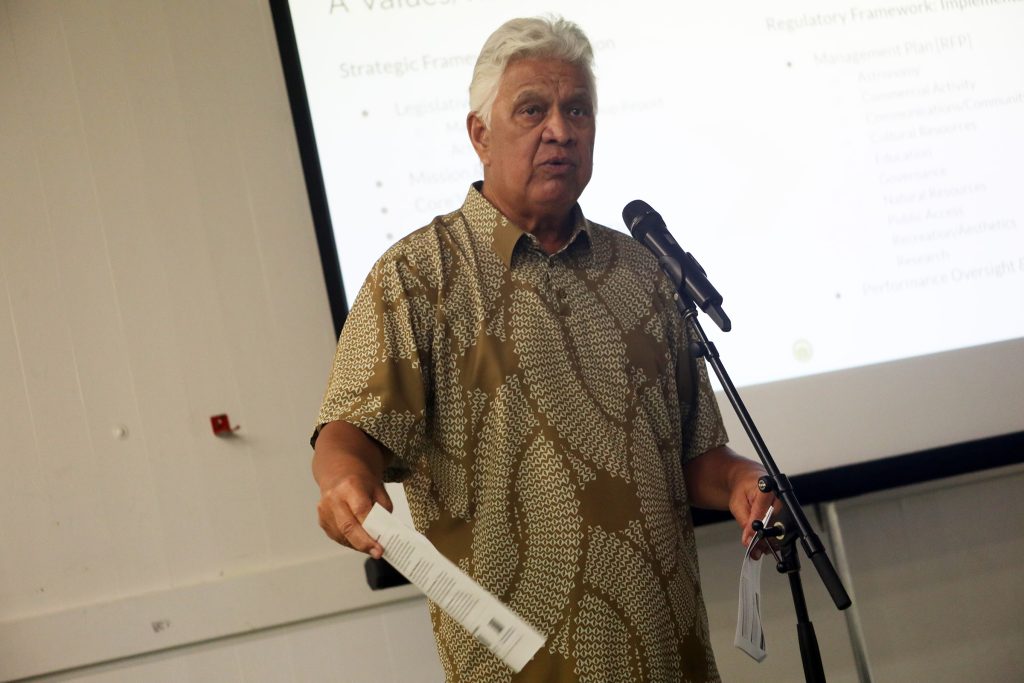 John de Fries, executive director of the Mauna Kea Stewardship and Oversight.
John de Fries, executive director of the Mauna Kea Stewardship and Oversight.
The Authority acknowledged the time it took to hire consultants to develop the comprehensive Mauna Kea Management Plan and to host community engagement meetings this past year. However, they stated that following procurement procedures set by the state has been frustrating.
“It is hard to have sympathy at this point because you all have had so much time and had $14 million in funding to start,” Dela Cruz said during the meeting. “I would just hope that the Authority is working within the statute of what it is, not what it wishes to be. There is too much to focus on.”
According to Act 255, during the five-year transition period, the Authority must adopt a management plan, create a framework of rules, develop a financial plan that strives for financial self-sustainability, and prepare to assume all legal and operational responsibilities currently under UH management.
